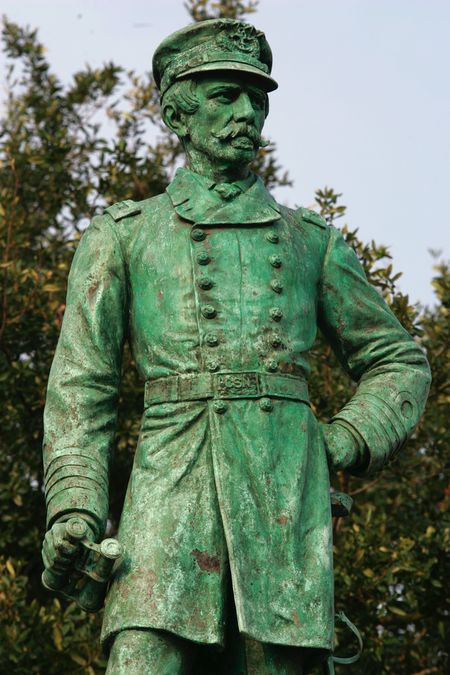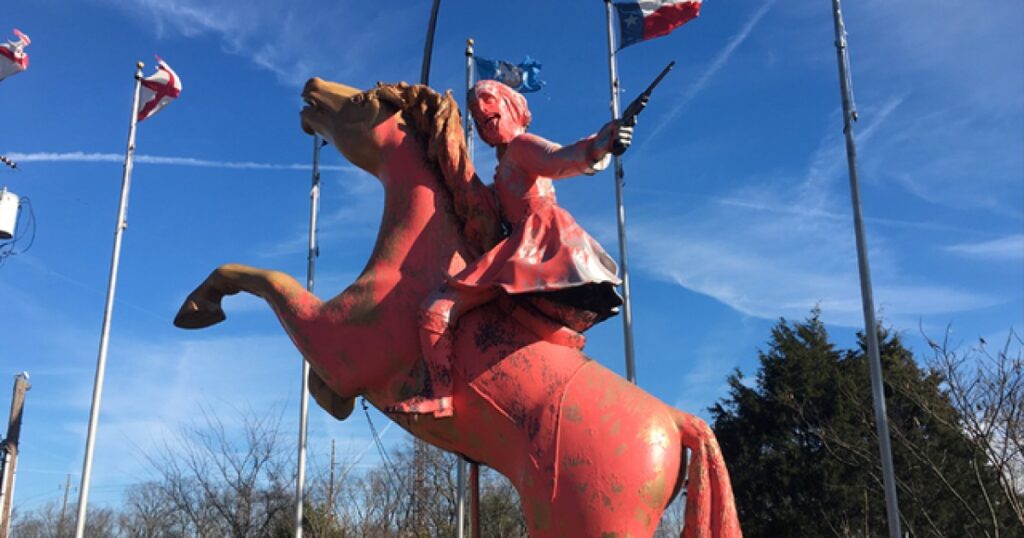What to do about those statues? The easy answer to the literally monumental question facing American cities and towns is “put them in a museum.” It seems like an obvious thing to do; we ostensibly don’t want to destroy our history and so preserving these monuments in a museum where they can be placed in a different context seems like the best option. Yet, I can’t help but think; why?
Firstly, and more basically, there simply isn’t enough physical space for the monuments. Monuments are physically massive, especially the important or iconic and therefore the most problematic ones. Sure, the podunk monuments to the Confederate grunts that litter the cemeteries of the South are small and could conceivably be stored out of sight in a county museum’s closet, but where do you put any of the massive equestrian statues of Confederate generals? Where do you put the formerly intact column of General Lee from New Orleans? Or, hypothetically, where do you put the bronze statue of Jefferson from his memorial, or, even, the structure itself? How would one even attempt to displace the Washington Monument? Certainly, those might seem like wild hypotheticals right now, but merely fifteen years before their destruction Lee and Beauregard in New Orleans were placed on the NRHP for eternal preservation.
Secondly, even if we disregard the physical troubles of storage and presentation of monuments, what’s the point? Perhaps this is an overly cynical look at the issue, but what kind of museum is going to be created by a government for the things a government is attempting to remove? If a monument is being removed from a location, this monument is no longer wanted. It’s being removed for a reason, which, almost always, is to“de-contextualise” the public space that it resides in. For example, the removal of the physical Cecil Rhodes in Oxford is to remove the metaphorical Cecil Rhodes in Oxford, the re-contextualization of Oxford as one without Rhodes, without imperial connections. As museums, while not as public as a plaza or park, are still very much in the public space, the movement of monuments to such a location is counterproductive to the point of moving the monument in the first place.
The local governments’ reluctance to keep offensive statues is perfectly understandable, of course. Despite the best efforts of people far more intelligent than I, I don’t really see any good way to re-contextualize these monuments, either in situ or in a museum. Monuments are created with explicit intent. They are unquestionably propaganda, created to evoke a specific and intentional emotion. An equestrian statue of Lee is explicitly created to link him to the military geniuses and statesmen of the Western tradition. No matter if the statue is still on location and has a plaque placed on the base to inform the viewer of the crimes of Lee and the society that created the statue or is in a museum display with the same information, the effect is the same. So long as the statue is extant and intact the intention of the statue is intact; he is still linked to that tradition. Some would say that the monument can be modified to change its intention (for a great example, look at the Ukrainian town that paints their Stalin statue like Batman), yet in my mind this kind of extreme modification is essentially the same as destruction; the monument is no longer extant, it has been destroyed and made into another piece of art. That’s fine, but in my mind it isn’t the kind of “preservation and re-contextualization” that people talk about when referring to moving monuments into museums, which I think is served perfectly well by a photograph or two.


